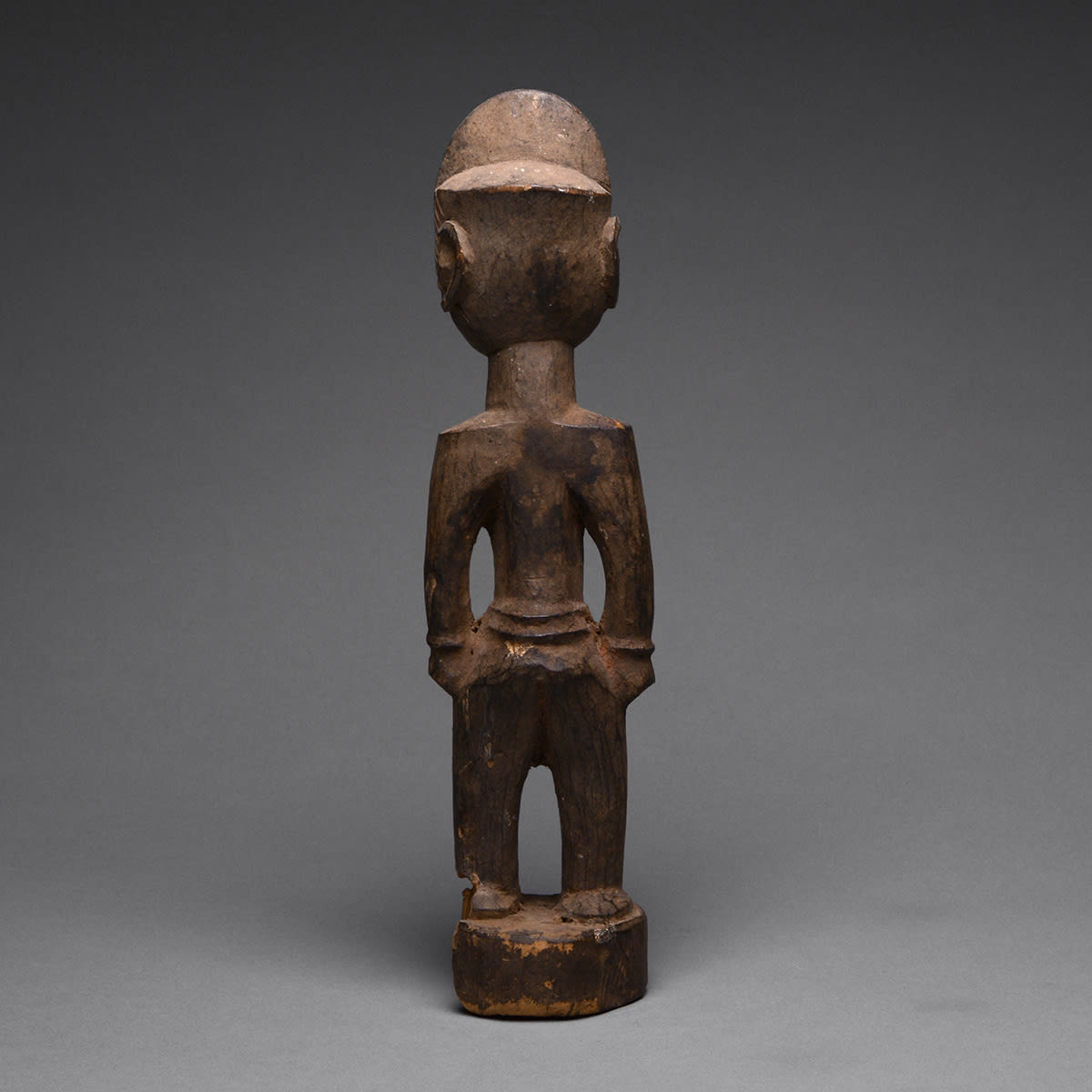Yoruba Female Standing Figure, 1850 CE - 1930 CE
Wood
29.2 x 7 cm
11 1/2 x 2 3/4 in
11 1/2 x 2 3/4 in
DA.437
Further images
Among African art forms, wooden figurative sculpture has received a great deal of attention from western cultures. Wood is the material typically used throughout Sub-Saharan Africa because it is practical...
Among African art forms, wooden figurative sculpture has received a great deal of attention from western cultures. Wood is the material typically used throughout Sub-Saharan Africa because it is practical and available. The human figure is most commonly represented in sculptural form. Lees frequently, animals such as birds, antelopes, monkeys, and leopards, are depicted. Figures are represented standing with bent knees or seated on a circular stool. Few sculptures depict figures in movement. African sculpture is very balanced and symmetrical. A common device used to create a sense of balance is the repetition of shapes within different parts of the body. While a sculpture is meant to be understood form a continuous view, by walking around it, most African sculpture does not have a predetermined direction for viewing, some figures were never intended for display, and therefore will not stand on their own. African art is not meant to be an illusion of reality. The features and body parts are often somewhat abstract in form. The figure enters reality by being given a personal name, like a child. The sculpture interacts with the viewer by being part of their space. Usually being modest in size, the sculptures are made to be portable and handled. The figures may be made for various purposes. Some represent a deceased twin, carved upon its death. the twin figure, or Ibeji, would then be cared for by the mother as though it were her child, washing and feeding it, to insure the health of the surviving twin. The wood surface of the figures often shows wear from the constant rubbing and use. Other figures may be used to facilitate childbirth. Some represent spirit partners, a husband or wife of the spirit world which also needs attention form its owner. Figurative sculpture is widely used in divination practices. Many of the diviner's instruments are elaborately carved with heads, faces, and figures. Power sculpture, nkisi, is used in the Zaire river basin for healing and protection. In the Yoruba culture, the thunder God, Shango, has a strong following. Cult members dance with small wooden staffs called ose Shango. These staffs most often depict a single female figure whose head supports a double ax. This double ax motif, which represents thunderstones is the most important element associated with Shango. It represents Shango's destructive side and his ability to hurl thunder celts into the community.







